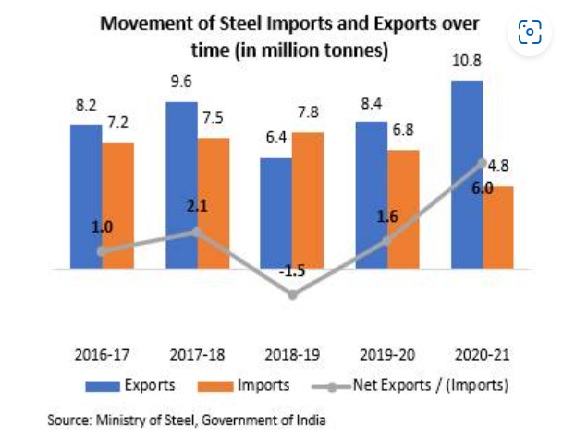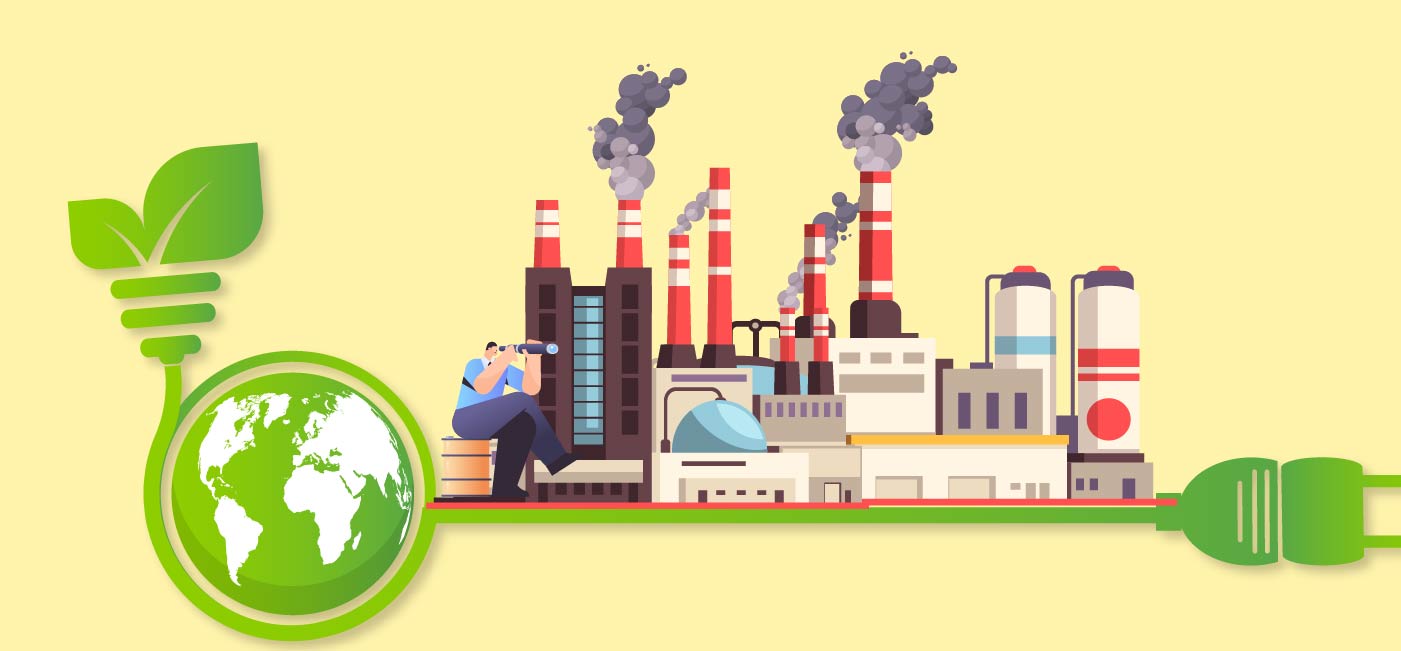Overview of the Steel Industry
Steel production emits over 3 billion metric tonnes of CO2 annually, making it the industrial material with the most significant impact on climate change. Owing to the energy-intensive manufacturing processes, the steel industry accounts for nearly 9% of total GHG emissions in the country. Furthermore, Indian steel companies import coking coal worth $ 8 -10 billion, accounting for almost 2% of India’s total import bill.

As the government plans to double India’s steel manufacturing capacity to 300 million tonnes per annum (mtpa) by 2030, the steel industry coal usage, high CO2 emissions, and import dependence are expected to grow significantly.
Let us dig a little deeper into the Decarbonisation challenges and how the Indian steel industry is resilient in finding innovative solutions to boost our economic growth.
Transitions in the Indian Steel Sector
India plans to double its steel production capacity by 2030 compared to 2019 and achieve the voluntary net-zero emissions target by 2070. As a result, India’s policymaking is critical in accelerating the transition of the steel industry from a coal-intensive sector to green technologies.
We can ensure a smooth transition to energy efficient steel industry through retrofitting modern technologies, utilization of waste heat, use of better quality inputs, etc.
Recently, PHDCCI organized a conclave that industry leaders attended to create a robust and structured mechanism to boost steel production to 300 MTPA levels in India. It requested that the government must establish a regulatory body for the steel industry to control rising steel prices, which have a direct impact on the ease of doing business and productivity of MSMEs.
Carbon Emissions in the Indian Steel Industry
The energy consumption in India’s integrated steel industry is estimated to be 6-6.5 Giga calories per tonne, which is significantly higher than the global consumption benchmark of 4-4.5. It necessitates the development of an effective roadmap to reduce reliance on emission-intensive methods of steel production.
Antiquated plant infrastructure, old plant floors, operating practices, and poor quality raw materials such as high ash coal/coke and high alumina iron ore cause hard-to-abate emission in the steel industry.
India is the only steel producer across the World to use Coal as the primary source of energy to separate oxygen from iron. This in turn adds to CO2 emissions. India to meet its pledge to mitigate CO2 emissions by 33% by 2030 needs viable green fuel alternatives.

Challenges to Decarbonisation in the Steel Industry
Major challenges the Steel industry faces are-
- Dependence on coal to produce high heat in the blast furnaces and a vital part of the production process.
- Small businesses struggle with EBITDA due to low-profit margins and high capital intensity, so bearing the cost of decarbonization comes as a shock.
- As also recommended by PHDCCI, the National apex body promoting the development of industries, there is a need for robust policy and incentives to make steel production more competitive.
- There is a scarcity of high-quality iron ore suitable for decarbonization via the direct reduced iron-electric arc furnace (DRI-EAF).
- Shortage of skilled workforce to support the steel industry’s low-carbon energy transition.
- The present decarbonization methods are expensive. Green Hydrogen costs ~ Rs. 450 – 525 a kilo. Even carbon-reducing methods like EAF recycling involve high investments.
Decarbonization Strategies for the Steel Industry
1. Renewable Alternatives to Coal for lowering greenhouse gas emissions
Using Syngas Gas
Syngas is synthetic gas prepared by mixing hydrogen, carbon monoxide, and carbon dioxide in varying ratios. Steelmaking using syngas is a revolutionary technique used to make DRI(direct reduced iron) in JSPL, Angul-I site. It is the World’s first DRI plant to use syngas as a reducing agent paired with a coal gasifier to produce sponge iron.
Using Green Hydrogen
Recently Reliance Industries invested Rs. 75000 crores in producing clean energies like Hydrogen and Solar power. Other companies, too, are optimistic about the transition to green Hydrogen production. However, the growth of the steel industry to green hydrogen may appear costly now, leading to an increase in steel prices.
But its cost efficiency will increase over time. The high emission levels of fossil-based fuels will eventually raise the cost of coal, lowering the cost of renewable energies.
Using Solar Power
Tata Steel has partnered with Tata Power to build a 41-MW solar project in Jharkhand and Odisha. The project will generate solar power for the Jamshedpur and Kalinger steel production facilities using rooftop, floating, and ground-mounted solar panels, saving 45,210 metric tonnes of CO2 per year. Solar Power will play a key role in sustaining green steel production in India.
2. Recycling of Steel Scrap
Globally, ~ 630 million tonnes of steel scrap are recycled annually, resulting in an annual CO2 emission reduction of approximately 950 million tons. In addition, reusing steel scrap reduces emissions by 86%, water consumption by 40%, and water pollution by 70%. Therefore, steel scrap recycling conserves energy and valuable natural resources, aiding the battle against climate change.
3. Adopting Energy efficient measures
Greenhouse gas emissions can be easily captured and traded back to the market using Carbon Capture, Utilization, and Storage (CUS). Carbon storage steel can help companies reduce costs while moving toward net zero targets. Switching to energy-efficient ways such as Electric Arc Furnaces (EAF), optimizing the blast furnace mix, using biomass, new fuel injection technologies, etc., will help the steel industry decarbonize.
Key Takeaways
In 2022-23, the government allocated Rs. 47 crores to the Ministry of Steel to make India competitive in the global steel industry and achieve net zero ambitions. As a result, in India, crude steel production increased by 20.4% YOY, producing 96.9 MT of crude oil. As a result, India appears to be on track to become the world’s leading producer of green steel through an increase in energy-efficient production.
Disclaimer*: The numbers mentioned in this article are for information purposes only. He/she should not consider this a buy/sell/hold recommendation from Research & Ranking. The company shall not be liable for any losses that occur.
FAQs
What is Decarbonization?
Decarbonization is the process of reducing the carbon content in metals.
Why is Carbon used as input in the Steel Industry?
Carbon is a hardener, controlling ductility, hardness, and tensile strength.
Read more: How Long-term investing helps create life-changing wealth – TOI.
How useful was this post?
Click on a star to rate it!
Average rating 3.7 / 5. Vote count: 9
No votes so far! Be the first to rate this post.

